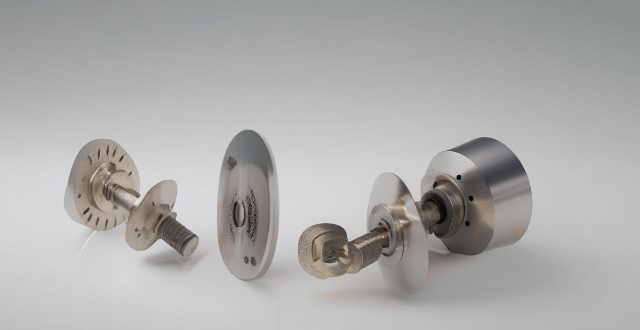Permanent magnet motors are utilized across a wide range of industries due to their efficiency and reliability. Key sectors include the automotive industry, where they power electric and hybrid vehicles and are used in automated manufacturing. In aerospace and defense, PM motors are crucial for aircraft systems and military applications. Appliance manufacturing benefits from PM motors in household and commercial equipment. The medical sector employs them in imaging equipment and surgical tools. Manufacturing and process control use PM motors in CNC machinery and pumps/valves. Renewable energy sectors such as wind turbines and solar tracking systems also rely on these motors. Consumer electronics, including audio and visual equipment as well as toys and hobbyist products, make use of permanent magnet motors for various functions.

Industries Utilizing Permanent Magnet Motors
Permanent magnet motors are highly efficient and reliable, making them suitable for a variety of applications across different industries. Below is an overview of the sectors where these motors are most commonly employed.
1. Automotive Industry
a. Electric and Hybrid Vehicles
- Powertrain Systems: PM motors are used as the primary propulsion source in electric vehicles (EVs) and hybrid electric vehicles (HEVs).
- Energy Recovery: They play a key role in regenerative braking systems to recover energy usually lost during braking.
b. Automated Manufacturing
- Robotics: Precise control in assembly line robots often relies on the consistent performance of PM motors.
2. Aerospace and Defense
a. Aircraft Systems
- Auxiliary Power Units: PM motors are used in APUs for powering aircraft systems without running the main engines.
- Control Surfaces: They provide precise control over aircraft control surfaces such as flaps and rudders.
b. Military Applications
- Stealth Operations: PM motors are preferred for their quiet operation in submarines and stealth aircraft.
3. Appliance Manufacturing
a. Household Appliances
- Washing Machines: Direct-drive PM motors improve efficiency and reduce wear and tear.
- Dishwashers: Their use allows for more compact designs and quieter operation.
b. Commercial Equipment
- Industrial Washers: High-efficiency PM motors are used in commercial laundry equipment.
- Refrigeration Systems: Efficient cooling systems in commercial refrigerators and freezers benefit from PM motor technology.
4. Medical Equipment
a. Imaging Equipment
- MRI Machines: PM motors are used in the magnetic resonance imaging machines due to their magnetic field compatibility.
- CT Scanners: Precision positioning systems within CT scanners rely on accurate PM motor control.
b. Surgical Tools
- Robotic Surgery: Robotic arms in surgical devices utilize PM motors for high precision movements.
5. Manufacturing and Process Control
a. CNC Machinery
- Precision Tooling: Computer numerical control (CNC) machines employ PM motors for accurate tool positioning.
b. Pumps and Valves
- Process Control: In chemical and oil refining processes, PM motors are used in pumps and valves for fluid handling.
6. Renewable Energy
a. Wind Turbines
- Generation Systems: PM motors/generators are used in wind turbines to convert wind energy into electricity.
b. Solar Tracking Systems
- Optimization: Solar panels with PM motor-driven tracking systems follow the sun's path to maximize energy capture.
7. Consumer Electronics
a. Audio and Visual Equipment
- Speakers and Microphones: High-end audio equipment uses PM motors for smooth motion in volume controls and turntables.
- Cameras: Precision autofocus mechanisms in cameras are powered by small PM motors.
b. Toys and Hobbyist Products
- Remote Control Vehicles: PM motors are popular in RC cars, boats, and drones for their light weight and efficiency.
These are just some examples of the extensive use of permanent magnet motors across various sectors, demonstrating their versatility and importance in modern technology and industry.